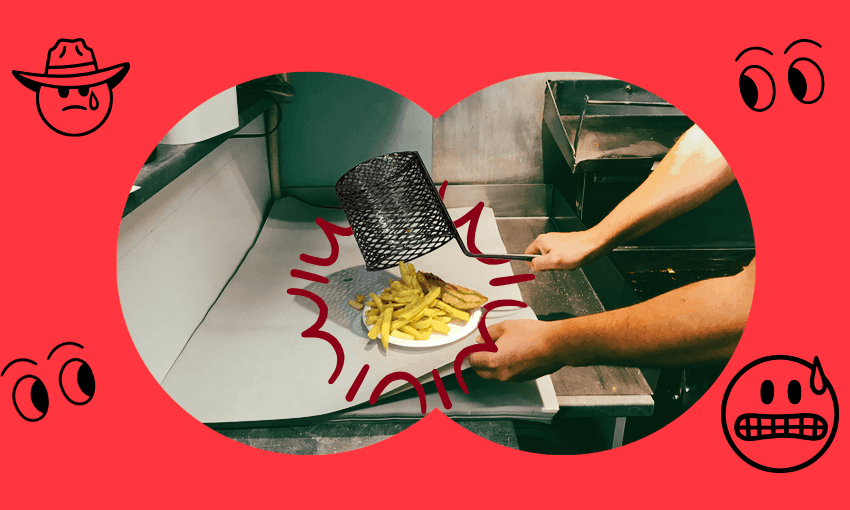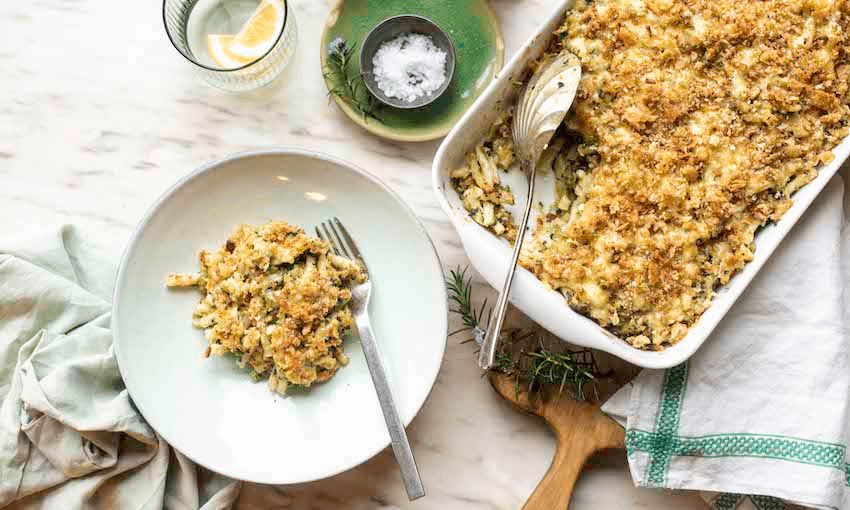As prices for cooking oil, fish and potatoes surge globally, fish and chip shops up and down the country are finding ways to adapt.
The deep fryers start bubbling away at 6am at Auckland fish and chip shop Marsic Bros. The shop, owned and operated by the same family since 1967, prides itself on a commitment to consistency and fair pricing.
That commitment is perhaps best reflected in their “Family Feast”, an affordable bundle of six fish, one-and-a-half scoops of chips, six mussels, 10 potato fritters and six sausages. Earlier this year, the price for the meal was $36. More recently, they’ve raised that to $38 to keep up with rising supply costs.
Even with the price jump, Marsic Bros owner operator Daniel Marsic reckons fish and chips remains an incredibly democratic dish. But, he says, those rising supply costs are having a big impact on little fish and chip shops like his.
In the latest consumer price index, oil and fats had increased 8.2 percent over the last 12 months. Meanwhile vegetables are up 9.2 percent and fish is up 5 percent.
“It’s all rising,” Marsic says. “Basically you have to pass it on to the customer, but also make sure that you don’t put yourself out of business because you’ve made things unaffordable”.
He’s seen their running costs rise across the board. Even the paper they wrap the orders in “has maybe doubled in the last two years,” Marsic says. In recent weeks, he’s been taken aback by the price of the fresh fruit and vegetables they use for their pottles of raw fish. “We make raw fish, with tomato, peppers and spring onions,” he says. “You have to look at it sometimes and think, is it worth it? Are we making anything on it?”
These issues aren’t exclusive to New Zealand’s fish and chip shops either. Fish and chip shops in Australia, Wales and England have reported similar challenges brought about by a combination of factors including Covid-induced inflation, heatwaves, droughts and global instability.
Marsic Bros has had to put their chip prices up twice since the pandemic. The first was because of the impact of rising freight costs, the second was because of inflation. While most customers understand, Marsic says, putting prices up is tricky when your customers are watching their dollar too. “We talk about ‘cheap as chips’, but that saying is starting to fade out of existence.”
Almost 2,000 kilometres away, it’s a similar story at the southernmost takeaway shop in the world, Galley Takeaways in Bluff. Owner Diana Williamson took over the shop on State Highway One as New Zealand came out of the first lockdown in 2020. “I’m doing really well,” she says. “But the rising food prices, it’s the worst right now, it’s just horrible.”
This time last year, she says, the canola oil that fills her deep fryers cost $38 a carton. Now she says it’s up to $80. A few months ago she shifted to animal shortening because it was a cheaper option, and as an added benefit, means the “fish and chips taste far better”. At the time it was $42 for 20 kilos, now it’s $75 for the same amount. It’s still cheaper than canola oil, but only slightly. Similarly, chips that were $28 for 15 kilograms are now $35. Last week, Williamson was told by her supplier that chip prices would be going up by another $5.
To get around the problem, Williamson has had to “think very hard and fast”. The situation has meant putting her prices up slightly, as well as shrinking portions of chips and fillet sizes. “I do get a few complaints, but in general people are understanding,” she says.
“It’s not for the faint-hearted,” Williamson says. “People have this perception that ‘it’s just a fish and chip shop’, but to make a living, it’s really a lot of work.”
In the Hawke’s Bay town of Wairoa, Ponderosa Takeaways has been a favourite fish and chips spot for locals for over 50 years. Part-owner Rawinia Robinson has been working at the shop for 25 years, and says she’s never seen these kinds of issues with supply and rising costs before.
“Things are really difficult to source,” she says. “There were about two months where we couldn’t even get newsprint to wrap fish and chips up in”. She hasn’t had oysters on the menu for “I don’t know how long”, because she can’t get a decent supply. At the moment, they’re struggling to get cans of fizzy drinks – apparently due to the shortage of co2 gas to carbonate them. Before that, there was a month-long shortage of tomato sauce.
And when they can source products, the prices have surged dramatically. “What used to cost $6,000 for my weekly shop is now more than $10,000,” she says. The pāua meat used to make pāua fritters has jumped from around $20 for 200 grams to $31. Tarakihi is around $30 a kilo, so “you have to charge $8 for a piece of fish, which is not very good for families,” she says.
In response, they’ve shifted to cheaper options. “We’ve always been a real family kind of place, so I just try and keep the prices as low as I can,” Robinson says. But with less room to budge, “something has to give”.
And while Robinson agrees that it’s tough times for fish and chip shops, she reckons those challenges that are being felt globally have encouraged her to be creative and to embrace change. “If you haven’t got something, it forces you to think of making something different to take its place,” she says. “With a bit of Kiwi ingenuity we’ll always keep going.”





